Are you a fan of handmade cards? With a little practice and these tips, you’ll be well on your way to creating stunning and one-of-a-kind designs.
- Stamping can add a unique touch to handmade cards.
- Both beginners and experienced card makers can use stamping techniques.
- Practice and these tips can help you create stunning designs.
- Stamping allows for personalization and customization of cards.
- Stamping can be a fun and creative activity to enjoy.
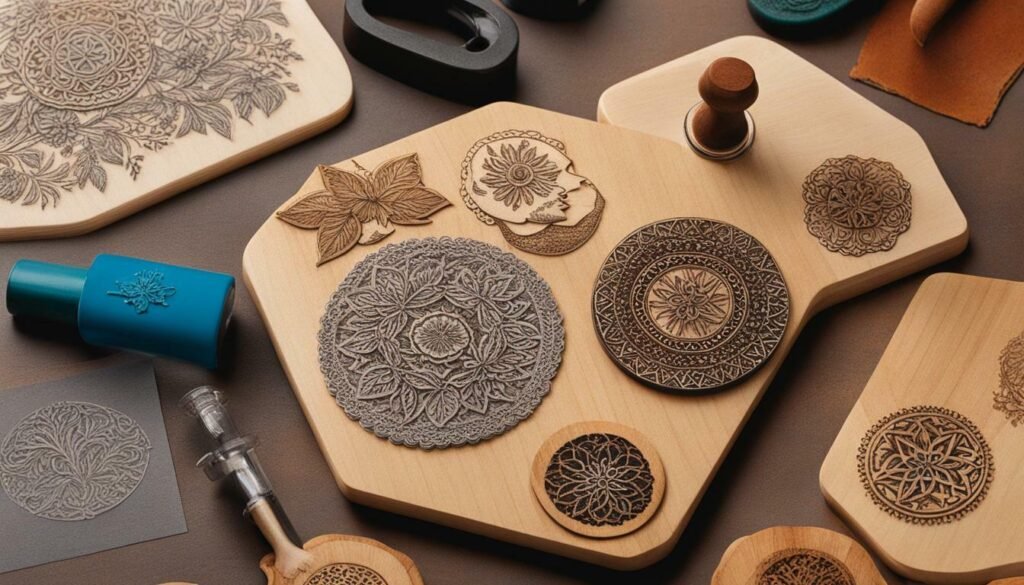
Getting Started: Essential Tools and Materials
Card making is a fun and creative hobby that allows you to make personalized and unique cards for your loved ones. To get started, you’ll need a few essential tools and materials:
- Cardstock: This is the base of your card and comes in various colors, textures, and weights.
- Stamps: There are many types of stamps available, including themed stamps, sentiments, and images. Choose stamps that fit your style and occasion.
- Ink pads: Inks come in different colors and types, such as dye, pigment, and hybrid. Choose an ink that is compatible with your stamp.
- Acrylic blocks: These are used to mount clear stamps and create even pressure for a clean image.
- Adhesives: You’ll need glue, tape, or adhesive dots to attach elements to your card.
- Embellishments: These can include ribbons, buttons, sequins, stickers, and more. Use embellishments to add texture and interest to your card.
- Cutting tools: A paper cutter or scissors are necessary for trimming your cardstock to size.
Stamping card techniques require the use of stamps, and understanding the different types of stamps is crucial for successful stamping. Here are some stamp types to explore:
- Wood-mounted stamps: These are traditional rubber stamps mounted on a wooden block. They are durable and produce bold and crisp images. They require an ink pad and are perfect for stamped designs that require a lot of pressure.
- Clear stamps: These are made of transparent polymer and are self-clinging to an acrylic block. They produce detailed and precise images and allow you to see exactly where you are stamping. They require an ink pad and are perfect for layering and creating overlapping designs.
- Cling stamps: These are similar to clear stamps but are already mounted on a foam cushion. They are ideal for using with acrylic blocks and take up less storage space than wood-mounted stamps. They, too, require an ink pad.
It’s important to note that each type of stamp requires different stamping techniques. For example, clear stamps require a lighter touch than wood-mounted stamps, as they are thinner and more delicate. Cling stamps require you to remove them carefully from the acrylic block to prevent damage.
- Always use the appropriate ink for your stamp type.
- When using wood-mounted stamps, be sure to apply pressure evenly and firmly.
- When using clear stamps, take care not to press too hard, as this can cause the stamp to distort or lose detail.
- When using cling stamps, make sure they are completely adhered to the acrylic block before stamping.
- When stamping, make sure the surface you are stamping on is even and flat to ensure that the image comes out evenly.
Ink It Up: Choosing the Right Ink for Your Stamped Cards
To avoid frustration and achieve professional-looking results, here are some stamping and card making tips on selecting the right ink:
- Consider the paper type – Different papers absorb ink differently, so choose an ink that will work well with the paper you’re using. Dye inks are best for absorbent papers like cardstock, while pigment inks work well on non-porous papers like vellum.
- Think about the color – The color of ink you choose can greatly affect the tone and style of your card. Experiment with different colors and shades to see what works best for your design.
- Try out different types of ink – There are various types of ink available, each with their own benefits. For example, solvent-based inks are waterproof and great for watercoloring techniques, while hybrid inks offer a combination of dye and pigment ink properties.
- Invest in good quality ink – Cheap inks may seem like a bargain, but they often result in disappointing outcomes. Invest in good quality ink from a trusted brand to ensure your cards look their best.
Masking is a stamping technique that allows you to create layers and depth in your designs. It involves covering certain areas of your stamped image with a mask, allowing you to stamp over it without overlapping.
This technique creates the illusion of objects overlapping or appearing in front of each other.
To create your mask, simply stamp your image onto a piece of scrap paper and cut it out. Use this mask to cover the original stamped image before stamping the next layer. You can repeat this process multiple times to achieve a layered effect.
- Mask off areas to create different layers
- Combine multiple stamps to create a dimensional effect
- Experiment with different shapes and sizes of masks to create unique designs
Embossing is the perfect way to elevate your stamped designs and take them to the next level. This technique adds a touch of elegance and professionalism to your cards, making them stand out from the rest.
There are two types of embossing: dry embossing, which uses a stylus to create raised designs, and heat embossing, which uses embossing powder and a heat tool to create a raised and glossy finish.
If you’re new to embossing, here are some stamping tips to get started:
- Use pigment ink for the best results with embossing powder.
- Apply the powder to the stamped image right away to ensure it sticks to the ink.
- Tap off any excess powder before heating to avoid stray specks.
- Heat from underneath the cardstock to avoid blowing away the powder.
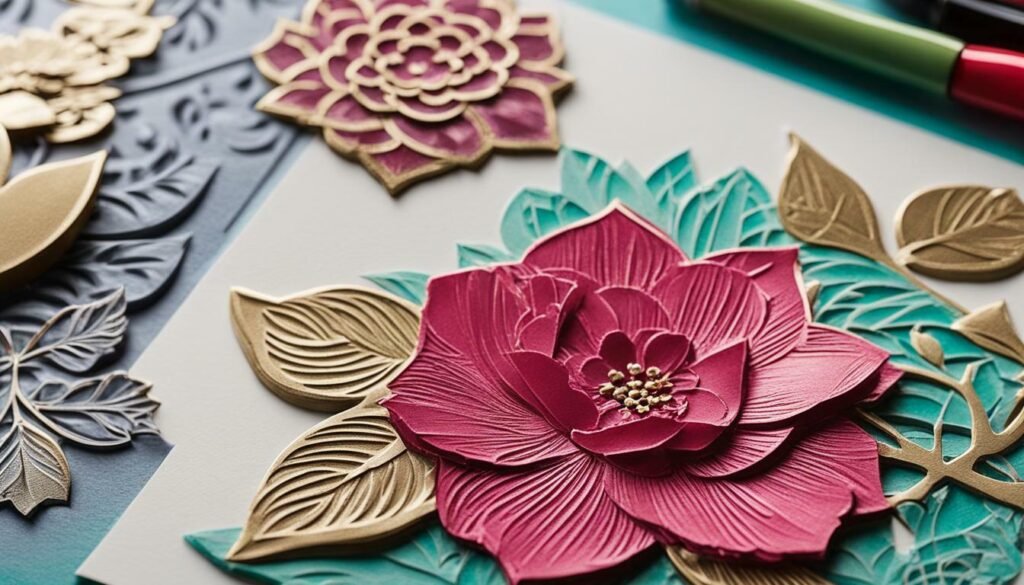
Coloring with Stamps: Adding Life to Your Designs
Coloring is an excellent way to create a unique element on your stamped cards. It adds character and personality to your designs, making them stand out from the crowd.
Here are some stamping techniques and card making ideas to help you add color to your designs:
- Watercoloring: This technique involves adding water to dye or pigment-based inks to create a translucent effect. Use a brush to apply the ink, and blend different colors to create a beautiful gradient effect.
- Alcohol Markers: Alcohol markers are the perfect tool for coloring stamped images. They are quick-drying and blendable, making them ideal for coloring small areas. Use different shades of the same color to create a subtle and smooth blend.
- Colored Pencils: Colored pencils are perfect for adding texture and depth to stamped designs. They are easy to use, and you can control the amount of pressure you apply to achieve the desired effect.
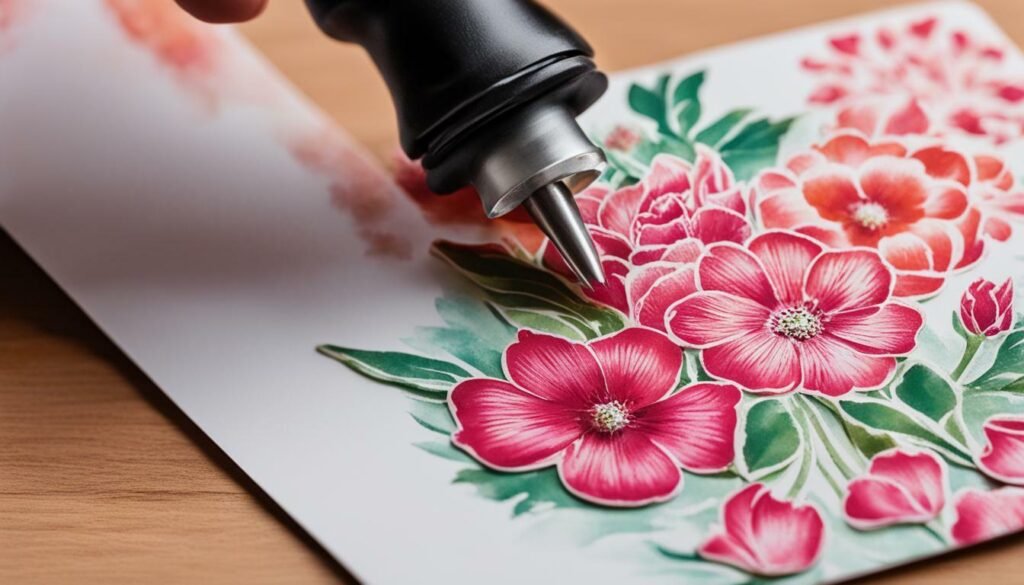
Interactive Cards: Surprise and Delight
Take your card making skills to the next level by creating interactive cards that surprise and delight the recipient. These card making techniques are perfect for special occasions or just to show someone you care.
- Pop-Up Cards: Add a three-dimensional element to your cards by creating pop-up elements. Use stamps to create images that jump out of the card when opened.
- Shaker Cards: Put a modern twist on traditional cards by creating shaker elements. Use stamps and sequins to create a fun and interactive card that will keep the recipient entertained.
- Slider Cards: Add movement to your cards by creating slider elements. Use stamps and a slider mechanism to make images move or reveal hidden messages.
Sentimental Expressions: Adding Meaningful Messages
Here are some card making ideas to help you incorporate heartfelt messages into your designs:
- Personalize your sentiment to suit the recipient’s personality and interests.
- Choose quotes or phrases that are meaningful to the recipient.
- Consider adding a heartfelt message in your own handwriting to make it more personal.
- Use letter stamps to spell out a message or combine different letter stamps to create your own words.
- Experiment with different font styles and colors to make your sentiment pop.
- Consider adding a touch of humor to your sentiment to bring a smile to the recipient’s face.

Stamping isn’t just limited to paper. Why not try some of these stamping techniques on different surfaces to add a unique touch to your handmade cards?
- Fabric – use fabric ink pads and stamps to create one-of-a-kind designs on fabric. Great for creating personalized gifts such as tote bags, t-shirts, and even home decor items like pillows and curtains.
- Wood – stamp on wood veneer or pieces of balsa wood to create rustic or natural designs. Use clear stamps with archival ink to make the design more permanent.
- Ceramics – use a specialized ceramic ink pad and stamps to decorate ceramic items like mugs and plates. These make great gifts for special occasions like weddings or housewarming parties.
Participating in stamping challenges is a fun way to push your creativity and connect with other card makers. Here are some stamping tips to help you get the most out of any challenge:
- Read and understand the challenge rules before starting your project.
- Don’t be afraid to step out of your comfort zone and try new techniques.
- Use the challenge theme as inspiration, but don’t feel limited by it.
- Take your time and pay attention to the details.
- Don’t forget about the sentiment – make sure it’s appropriate for the occasion.
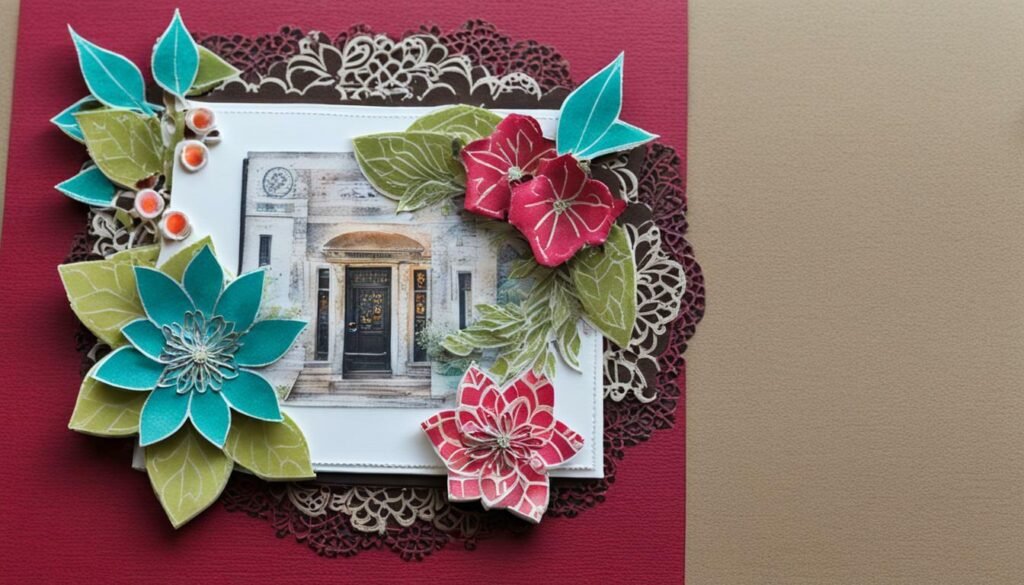
Staying up to date with the latest stamping trends is crucial for any card maker. Whether you’re looking for inspiration or seeking to keep your designs on-trend, being aware of the latest techniques and styles can help you create unique and innovative designs.
Here are some of the current stamping trends:
- Interactive cards: Cards that have interactive elements such as pop-ups, sliders, or shaker cards are all the rage right now. These elements add an extra layer of surprise and delight for the recipient.
- Watercoloring: Using watercolors to color stamped images is a trendy and popular technique. It creates a soft and ethereal look that is perfect for spring and summer cards.
- Embossing: Adding texture and dimension to stamped designs is still a popular trend, as it creates a professional and sophisticated look. Try experimenting with different types of embossing powders such as glitter or metallics.
- Minimalist designs: Less is more in the world of card making right now. Simple and clean designs with a lot of white space are trending. Add a pop of color or a unique stamp element for a touch of visual interest.
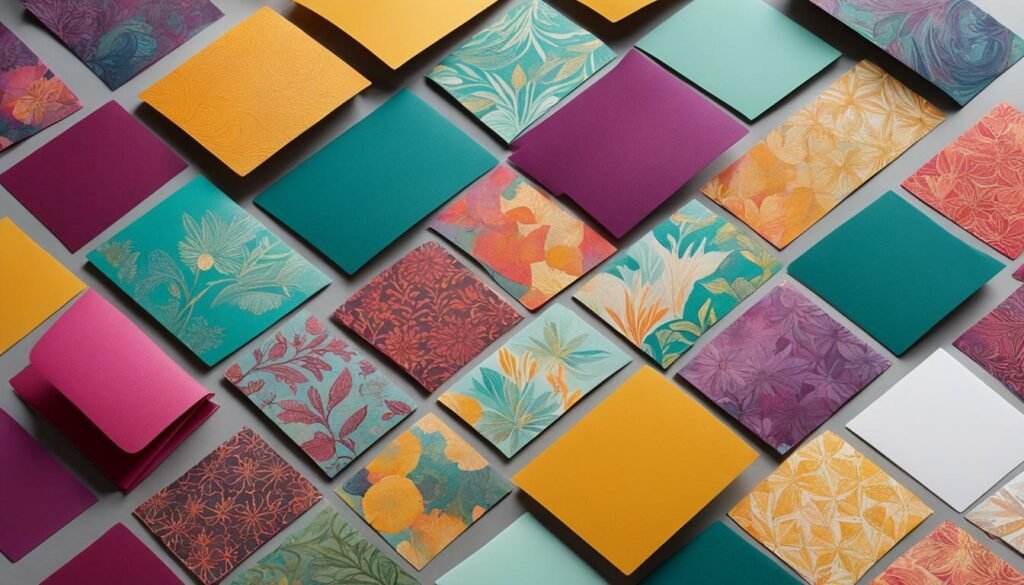
Now that you have created stunning stamped cards, it’s time to showcase your handmade masterpieces. Here are some creative ways to display your work:
- Frame your favorite cards and create a wall gallery for a unique and personalized look.
- Arrange your cards on a table or mantel and incorporate them into your home decor.
- Create a shadow box display to highlight a specific theme or occasion.
- Give your cards as gifts and package them in a beautifully decorated box or bag.
- Take photos of your cards and share them on social media or your personal blog to inspire others.
FAQ
What are stamping card techniques?
Stamping card techniques involve using stamps to create unique and personalized cards. They allow you to unleash your creativity and elevate your card designs to new heights.
What tools and materials do I need to get started with stamping card techniques?
To get started, you’ll need stamps, ink pads, cardstock, and embellishments. These essentials will help you create stunning designs.
What are the different types of stamps for stamping card techniques?
There are three main types of stamps: wood-mounted, clear, and cling stamps. Each type has its own advantages and techniques associated with them. Understanding these differences will help you achieve crisp and clean stamped images.
How do I choose the right ink for my stamped cards?
The choice of ink is crucial in achieving the desired outcome. Different inks work best for various card making techniques. We provide tips on selecting the right ink color and achieving the desired effects.
What is masking in stamping card techniques?
Masking is a technique that allows you to create layers and depth in your stamped designs. It involves masking off areas and combining multiple stamps to achieve stunning dimensional effects.
How can I elevate my stamped designs with embossing?
Embossing adds an elegant and professional touch to your stamped cards. There are different embossing techniques, such as heat embossing and dry embossing, that can help you create raised and textured designs.
How can I add color to my stamped designs?
Coloring stamped images can bring them to life. There are various coloring techniques, such as watercoloring, alcohol markers, and colored pencils, that you can use to add a personal touch to your designs.
How can I create interactive cards using stamping techniques?
Take your stamped cards to the next level by incorporating interactive elements. We explore different techniques, such as pop-up cards and shaker cards, that can surprise and delight your recipients.
How can I add meaningful messages to my stamped designs?
The sentiment on a card can make it truly special. We provide different ways to incorporate heartfelt messages into your stamped designs, as well as explore sentiments for various occasions.
Can I stamp on surfaces other than paper?
Absolutely! Stamping isn’t limited to paper. We share tips and techniques for stamping on different surfaces, such as fabric, wood, and ceramics.
How can participating in stamping challenges push my creativity?
Embrace stamping challenges and competitions to inspire new ideas and help you grow as a card maker. They can push your creativity and take your skills to the next level.
What are the current stamping trends in the card making world?
Stay up to date with the latest stamping trends in the world of card making. We explore innovative techniques, popular themes, and styles that are currently trending, helping you create unique and on-trend designs.
How can I present and display my stamped cards?
Once you’ve created your stunning stamped cards, we provide creative ways to present and display them. From framing to creating a card gallery, let your creativity extend beyond the card itself.
